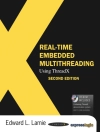Clustering techniques are increasingly being put to use in the analysis of high-throughput biological datasets. Novel computational techniques to analyse high throughput data in the form of sequences, gene and protein expressions, pathways, and images are becoming vital for understanding diseases and future drug discovery.
This book details the complete pathway of cluster analysis, from the basics of molecular biology to the generation of biological knowledge. The book also presents the latest clustering methods and clustering validation, thereby offering the reader a comprehensive review of clustering analysis in bioinformatics from the fundamentals through to state-of-the-art techniques and applications.
Key Features:
* Offers a contemporary review of clustering methods and applications in the field of bioinformatics, with particular emphasis on gene expression analysis
* Provides an excellent introduction to molecular biology with computer scientists and information engineering researchers in mind, laying out the basic biological knowledge behind the application of clustering analysis techniques in bioinformatics
* Explains the structure and properties of many types of high-throughput datasets commonly found in biological studies
* Discusses how clustering methods and their possible successors would be used to enhance the pace of biological discoveries in the future
* Includes a companion website hosting a selected collection of codes and links to publicly available datasets
Inhoudsopgave
Preface xix
List of Symbols xxi
About the Authors xxiii
Part One Introduction 1
1 Introduction to Bioinformatics 3
2 Computational Methods in Bioinformatics 9
Part Two Introduction to Molecular Biology 19
3 The Living Cell 21
4 Central Dogma of Molecular Biology 33
Part Three Data Acquisition and Pre-processing 53
5 High-throughput Technologies 55
6 Databases, Standards and Annotation 67
7 Normalisation 87
8 Feature Selection 109
9 Differential Expression 119
Part Four Clustering Methods 133
10 Clustering Forms 135
11 Partitional Clustering 143
12 Hierarchical Clustering 157
13 Fuzzy Clustering 167
14 Neural Network-based Clustering 181
15 Mixture Model Clustering 197
16 Graph Clustering 227
17 Consensus Clustering 247
18 Biclustering 265
19 Clustering Methods Discussion 283
Part Five Validation and Visualisation 303
20 Numerical Validation 305
21 Biological Validation 323
22 Visualisations and Presentations 339
Part Six New Clustering Frameworks Designed for Bioinformatics 363
23 Splitting-Merging Awareness Tactics (SMART) 365
24 Tightness-tunable Clustering (UNCLES) 385
Appendix 395
Index 409
Over de auteur
Asoke K. Nandi, Department of Electronic & Computer Engineering, Brunel University London, UK
Prof. Nandi is Chair and Head of the Electronic and Computer Engineering Department at Brunel University London, UK. He leads the Signal Processing and Communications Research Group with interests in the areas of signal processing, machine learning, and communications research. He is a Finland Distinguished Professor at the University of Jyvaskyla, Finland. In 1983 Professor Nandi was a member of the UA1 team at CERN that discovered the three fundamental particles known as W+, W- and Z0, providing the evidence for the unification of the electromagnetic and weak forces, which was recognized by the Nobel Committee for Physics in 1984. He has authored or co-authored more than 190 journal papers, and 2 books. The Google Scholar h-index of his publications is 54. In 2010 he received the Glory of Bengal Award for his outstanding achievements in scientific research, and in 2012 was awarded the IEEE Heinrich Hertz Award. Prof. Nandi is a Fellow of the IEEE.
Rui Fa, Department of Electronic & Computer Engineering, Brunel University London, UK
Dr. Fa is a Senior Reseach Fellow in the Department of Electronic & Computer Engineering at Brunel University London, UK. Prior to this, he held research positions at the University of York and the University of Leeds working in radar signal processing and wireless communication projects. His current research interests include bioinformatics, machine learning, Bayesian statistics, statistical signal processing, and network science. Dr Rui Fa received his Bachelor and Master degrees in electronic and electrical engineering from Nanjing University of Science and Technology, China, in 2000 and in 2003, respectively, and his Ph D degree in electrical engineering from University of Newcastle, UK, in 2007.
Basel Abu-Jamous, Department of Electronic & Computer Engineering, Brunel University London, UK
Basel Abu-Jamous is currently studying for his Ph D in electrical engineering & electronics at Brunel University London, UK. His research interests include bioinformatics, computational biology, and the broader areas of information engineering and machine learning.Basel Abu-Jamous received his B.Sc. degree in computer engineering from the University of Jordan, Amman, Jordan, in 2010. He received his M.Sc. degree in information and intelligence engineering from the University of Liverpool, Liverpool, U.K., in 2011. He was awarded the Sir Robin Saxby Prize of the 2010/2011 academic year based on his performance in his M.Sc. degree.












